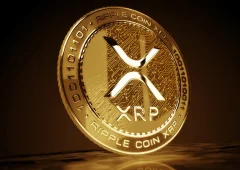Uber Considers Stablecoins to Cut Global Payment Costs
07.06.2025 22:00 1 min. read Alexander Stefanov
Uber is exploring stablecoins as a way to reduce international payment expenses, according to CEO Dara Khosrowshahi.
Speaking at the Bloomberg Tech Summit, he said the company is in the early research phase but sees stablecoins as a practical use of crypto with real-world benefits.
Khosrowshahi highlighted stablecoins’ potential to streamline cross-border transactions, calling them “promising” for global businesses. These dollar-pegged digital assets are designed to maintain price stability and reduce transfer fees.
Corporate and government interest in stablecoins is growing. Stripe has begun discussions with banks, and a Fireblocks report found 90% of institutions are assessing stablecoin use. Meanwhile, countries like Russia and the UAE are exploring state-backed versions.
According to Citigroup, the stablecoin market cap hit $230 billion in April, with annual transaction volumes surpassing $27 trillion—outpacing Visa and Mastercard. Uber’s interest reflects a broader shift toward blockchain-based tools for financial efficiency.
-
1
Binance Introduces First Bonding Curve-based Token Launch With Four.Meme Collaboration
14.07.2025 21:00 2 min. read -
2
Western Union Explores Stablecoin Integration After GENIUS Act Approval
22.07.2025 10:00 2 min. read -
3
Telegram Launches TON Wallet for U.S. Users, Unlocking in-app Crypto Features
22.07.2025 17:30 2 min. read -
4
Polymarket Eyes Launching Stablecoin to Capture Reserve Profits
23.07.2025 10:30 2 min. read -
5
JPMorgan Eyes Crypto-backed Loans Amid Favorable U.S. Policy Shift
22.07.2025 9:35 2 min. read
Goldman Sachs and BNY Launch Tokenized Money Market Funds for Institutions
Goldman Sachs and BNY are set to unveil a groundbreaking blockchain initiative that will allow institutional investors to purchase tokenized shares of money market funds, according to CNBC.
Polymarket Eyes Launching Stablecoin to Capture Reserve Profits
Polymarket, the fast-growing crypto prediction market, is exploring the launch of its own stablecoin to capitalize on the yield generated from reserves backing USDC deposits.
PNC Bank Partners with Coinbase to Bring Crypto Trading to Clients
PNC Financial Services Group has teamed up with Coinbase, enabling select customers to buy and sell cryptocurrencies directly from their PNC accounts.
Telegram Launches TON Wallet for U.S. Users, Unlocking in-app Crypto Features
Telegram has officially rolled out its TON Wallet to users in the United States, marking a major step forward in the integration of blockchain and messaging.
-
1
Binance Introduces First Bonding Curve-based Token Launch With Four.Meme Collaboration
14.07.2025 21:00 2 min. read -
2
Western Union Explores Stablecoin Integration After GENIUS Act Approval
22.07.2025 10:00 2 min. read -
3
Telegram Launches TON Wallet for U.S. Users, Unlocking in-app Crypto Features
22.07.2025 17:30 2 min. read -
4
Polymarket Eyes Launching Stablecoin to Capture Reserve Profits
23.07.2025 10:30 2 min. read -
5
JPMorgan Eyes Crypto-backed Loans Amid Favorable U.S. Policy Shift
22.07.2025 9:35 2 min. read


